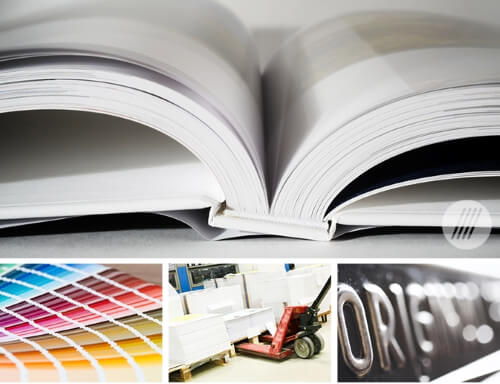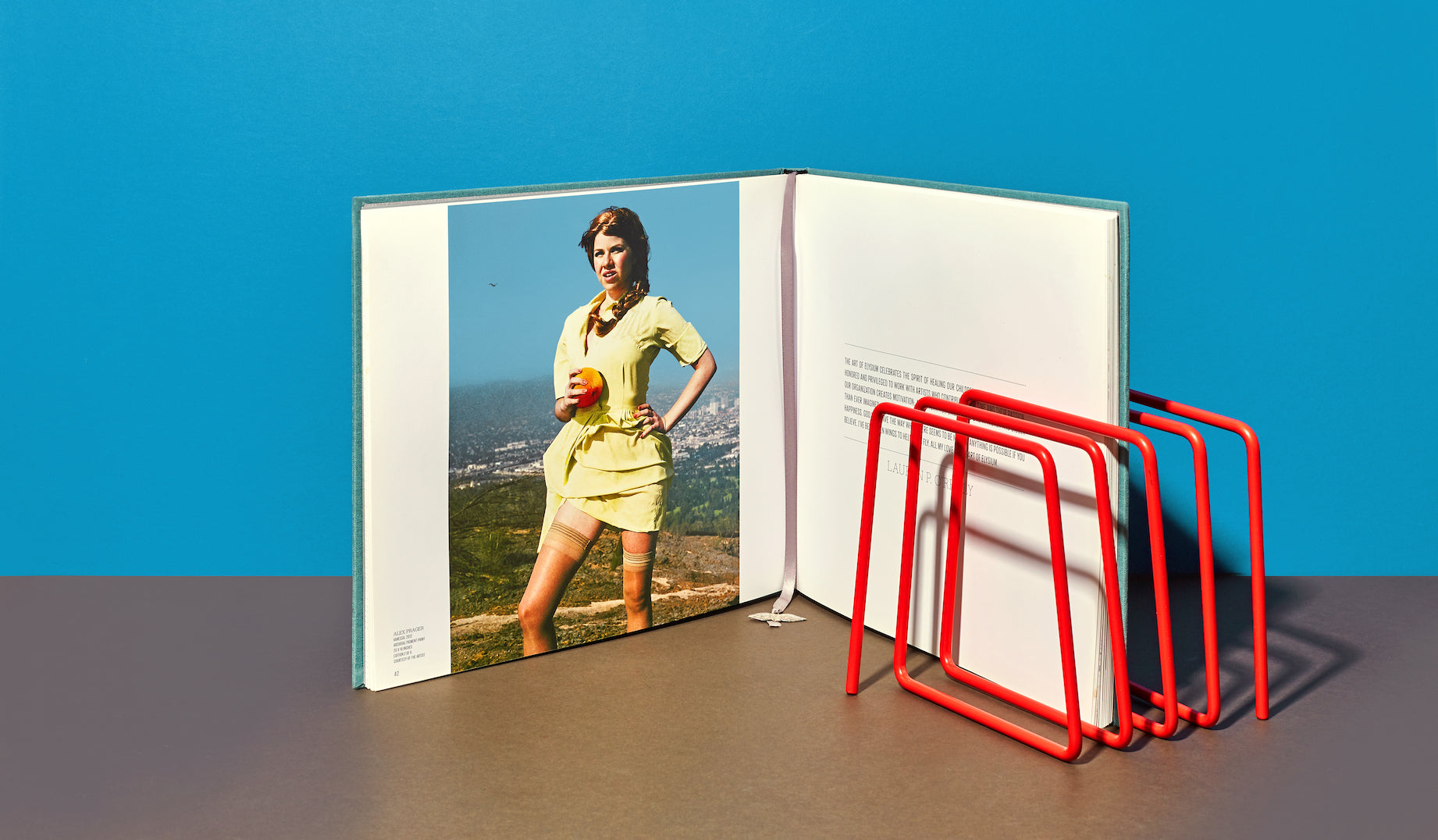The Designer’s Guide to Making a High-Quality art book
The Designer’s Guide to Making a High-Quality art book
Blog Article
Understanding the Process Behind High-grade Art Book Printing for Art Lovers
When it involves premium art book printing, recognizing the complexities of the procedure can boost your admiration for the end product. You may not realize just how crucial paper selection and ink choices are to the vibrancy of artwork. Each element plays a significant role in achieving the preferred result. As you discover the various components of art book printing, you'll discover insights that could change your point of view on art preservation and presentation.
The Significance of Paper Option in Art Book Printing
When it comes to art book printing, the choice of paper can make or damage the end product. You want your artwork to radiate, and the right paper boosts shade vibrancy and information. Take into consideration aspects like weight, texture, and surface; these aspects considerably impact exactly how readers regard your job.
For instance, a much heavier stock shares quality and longevity, while a distinctive finish can include deepness to pictures. Smooth paper is superb for in-depth recreations, allowing fine lines and subtle tones to appear crisp.
Do not ignore the paper's illumination; a brighter sheet can aid colors pop, making your art much more attractive. You'll also desire to consider just how the paper connects with inks and whether it can take care of the printing process without contorting or bleed-through. Ultimately, selecting the right paper sets the phase for your art, guaranteeing it captures the target market's attention equally as you visualized.
Choosing the Right Inks for Lively Recreations
Picking the appropriate inks is simply as vital as picking top quality paper to achieve dynamic reproductions in your art book. When you're publishing artwork, you desire shades that pop and precisely represent the original piece. Go with inks with a high pigment concentration; these have a tendency to create richer and much more saturated colors.
You may take into consideration using archival inks, which resist fading with time, guaranteeing your art book continues to be as striking as the day it was published. If you're dealing with photos or digitally developed art, pigment-based inks can supply a bigger shade range, boosting detail and deepness.
Don't forget the coating! Matte and glossy inks can significantly alter the look of your art work, so assume concerning the appearance you're intending to achieve - art book. Inevitably, the ideal ink selection matches your paper choice, producing a sensational visual experience for your viewers
The Duty of Color Management in Print Quality
Shade administration plays a necessary duty in achieving high print quality for your art book. It ensures that the colors you see on your display equate precisely to the published web page. Without efficient color monitoring, your lively art work may appear dull or altered, threatening your innovative vision.
To start, adjust your display on a regular basis. This step helps preserve consistent color depiction. Next, use color profiles customized for your printer and paper type. These accounts guide the printer in replicating shades properly, lowering discrepancies in between electronic and published variations.
When you prepare your data, think about utilizing a shade area like Adobe RGB or CMYK, depending on your printer's requirements. Always evidence your job, too; a test print can disclose any kind of potential color concerns before the last run. By prioritizing color monitoring, you guard the honesty of your art, guaranteeing your target market experiences it as you meant.

Understanding Different Binding Techniques
Attaining the best seek your art book goes past color monitoring; binding techniques likewise play a significant role in its total presentation and durability. You have a number of choices more info to evaluate, each with its very own special characteristics.
If you're intending for a specialist feel, case binding offers a strong choice with a difficult cover, ideal for showcasing your art work. On the various other hand, excellent binding supplies an adaptable back while keeping costs down, making it a popular option for softcover publications.
Spiral binding allows your art book to lay flat, which is wonderful for displaying pictures without obstruction. Saddle stitching is ideal for smaller brochures, providing a clean finish without the mass.
Inevitably, the binding technique you choose must show your imaginative vision and how you want viewers to involve with your job. See to it to evaluate these choices very carefully to attain the best result for your task.
The Impact of Print Size and Design on Presentation
While the option of print size and layout may seem second to web content, they greatly influence how your artwork is regarded. The measurements of your prints can either boost or lessen the impact of your items. Bigger prints can draw visitors in, permitting them to value intricate details, while smaller styles may need more intimate engagement.

Preservation Techniques for Durable Art Books
To ensure your art books stand the examination of time, it's important to apply effective conservation techniques. Use acid-free storage space boxes or protective sleeves to secure them from dust and physical damage.
When managing your books, constantly clean your more info hands or use cotton handwear covers to avoid oils and dirt moving onto the pages. Stay clear of bending or creasing the backs; instead, utilize book sustains when displaying them.
For added defense, consider buying archival-quality products for any kind of repair work or improvements. Routinely inspect your collection for signs of wear or damage, resolving issues immediately. By following these basic strategies, you can guarantee your art books stay vivid and accessible for years to find, protecting their elegance and worth for future generations.
Collaborating With Printers for Optimal Results
When you prepare to print your art book, selecting the appropriate printer is vital to accomplishing your vision. Clear communication concerning your expectations and demands will help assure that both you and the printer are on the same web page. Let's check out just how to make this collaboration as seamless and reliable as feasible.
Choosing the Right Printer

Effective Interaction Approaches
Effective communication is crucial for turning your art book vision into truth, specifically when collaborating with printers. art book. Begin by plainly outlining your project's goals, consisting of layout elements, preferred materials, and any type of details printing techniques. Don't be reluctant to share your motivations and referrals; this aids the printer understand your aesthetic
Be open to comments, as printers frequently have important insights that can enhance your project. This collaboration will certainly assure that your art book satisfies your expectations and shines in its final form.
Regularly Asked Inquiries
What Prevail Blunders to Stay Clear Of in Art Book Printing?
When publishing your art book, prevent typical mistakes like poor resolution images, incorrect shade profiles, and overlooking page layout. Do not neglect to check and confirm details to validate your last product meets your assumptions.
Exactly How Does Digital Printing Differ From Conventional Printing Methods?
Digital printing makes use of electronic documents to produce prints directly, permitting quicker turnaround and customization. On the other hand, standard techniques involve physical plates, which can be taxing and less flexible for tiny runs or distinct designs.
What Is the Regular Turn-around Time for Art Book Printing?
The typical turn-around time for art book printing varies, yet you can expect it to take anywhere from a couple of weeks to a number of months. Variables like complexity, amount, and printing method all affect this timeline.
Can I Print a Minimal Edition Art Book Financially?
You can print a restricted edition art book financially by selecting cost-efficient materials, enhancing print runs, and click here utilizing digital printing alternatives. Cautious preparation and budgeting will aid you accomplish top quality without spending too much.
What Are the Ecological Considerations in Art Book Printing?
When considering art book printing, you must consider environment-friendly products, sustainable inks, and energy-efficient processes (art book). Picking neighborhood printers can also minimize your carbon impact, making your task both stunning and ecologically liable
Report this page